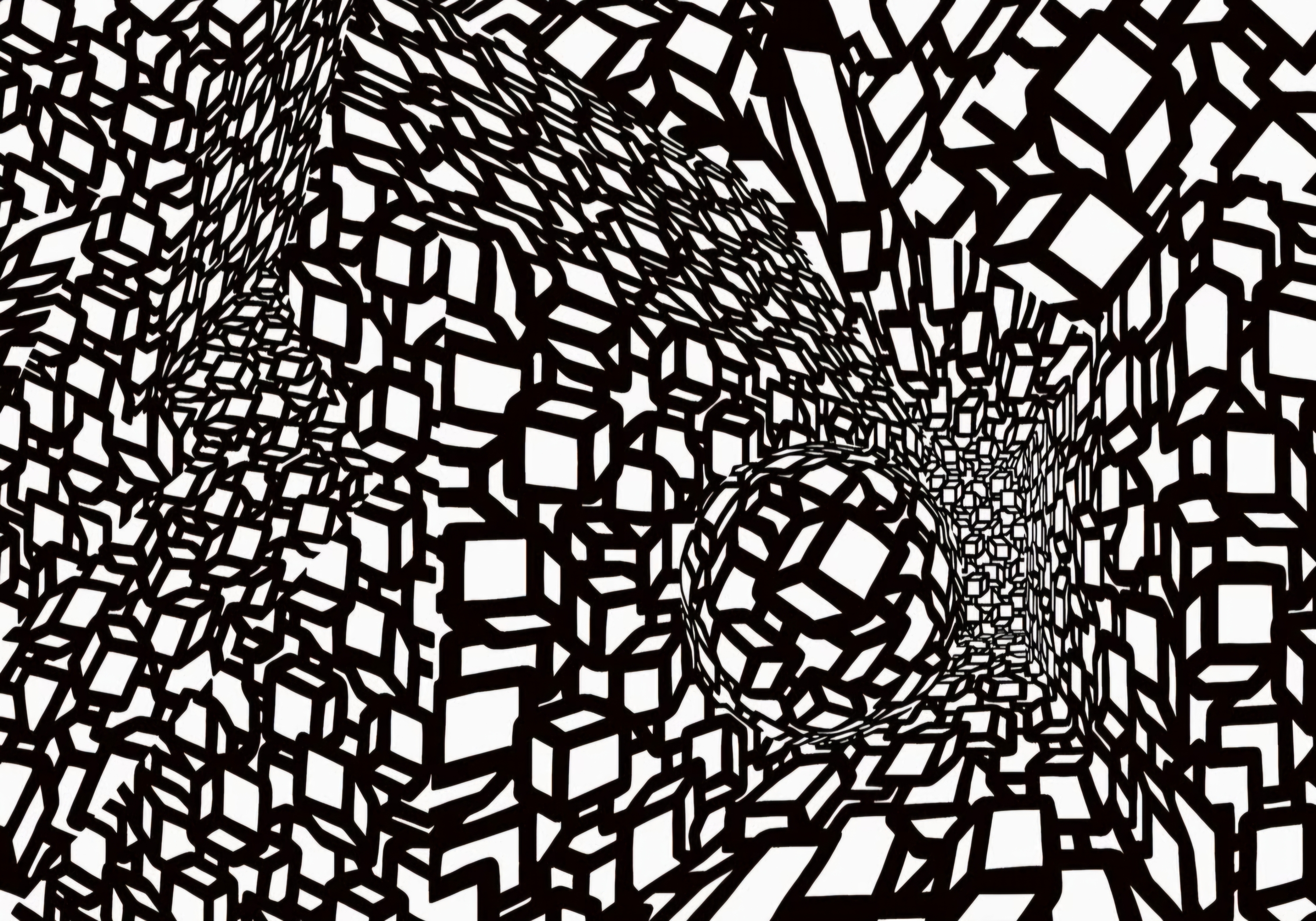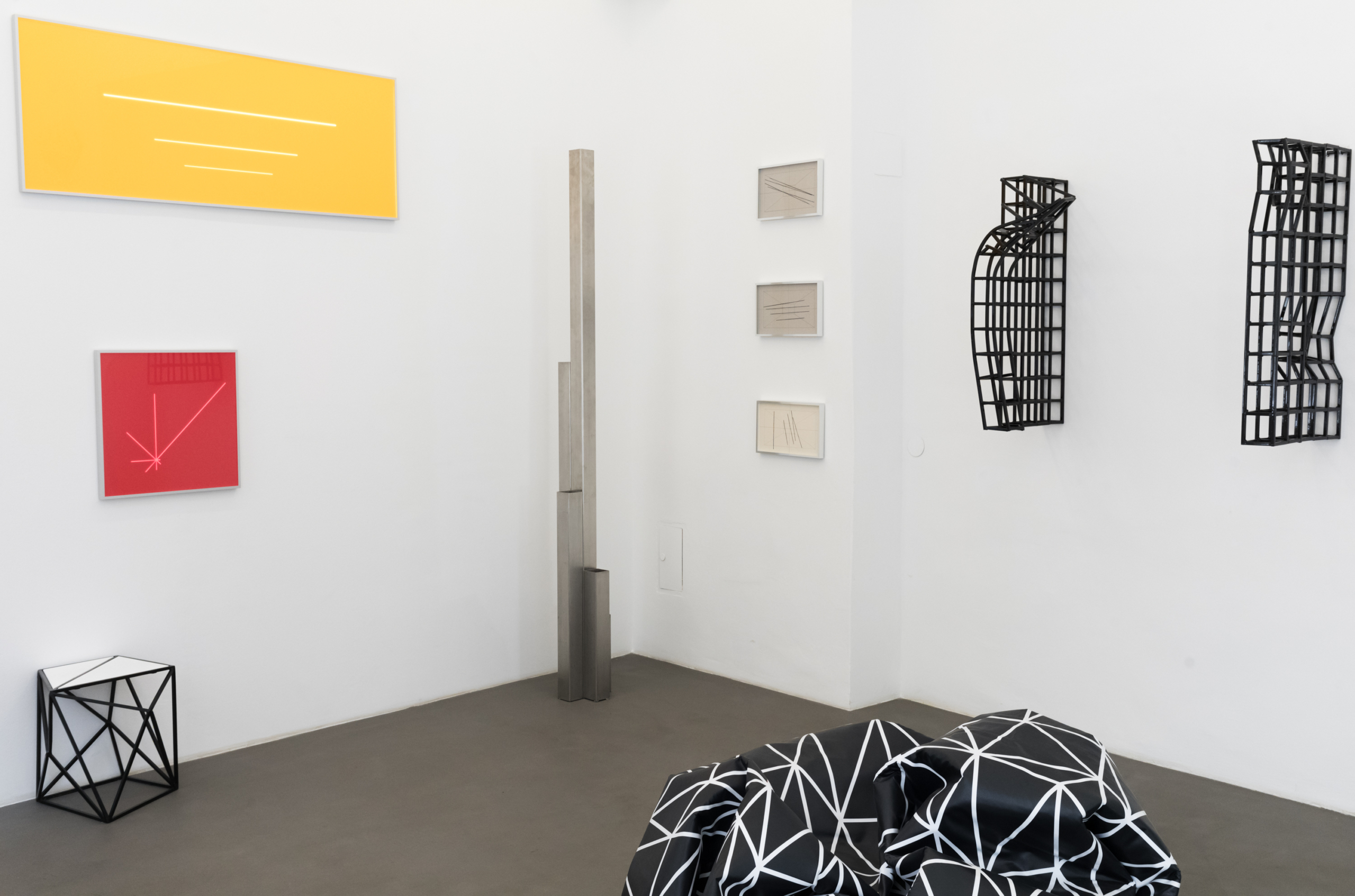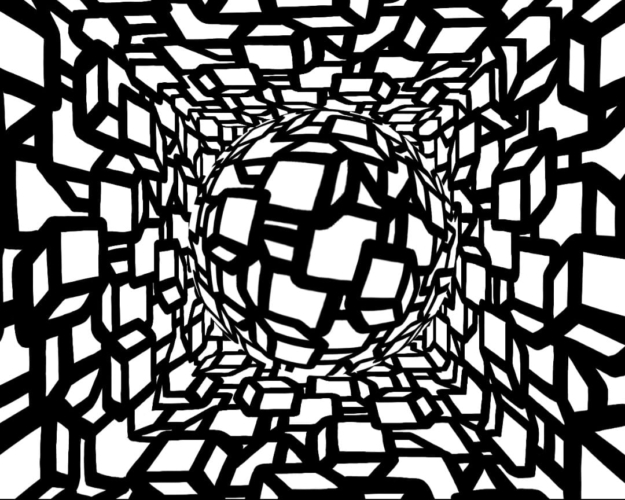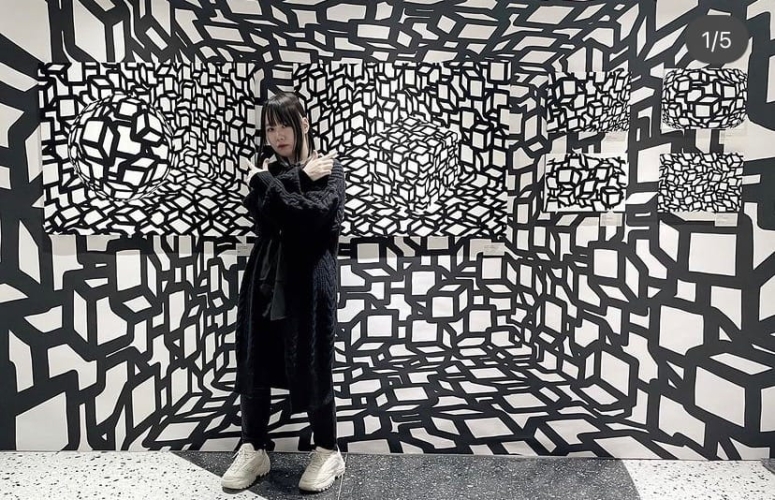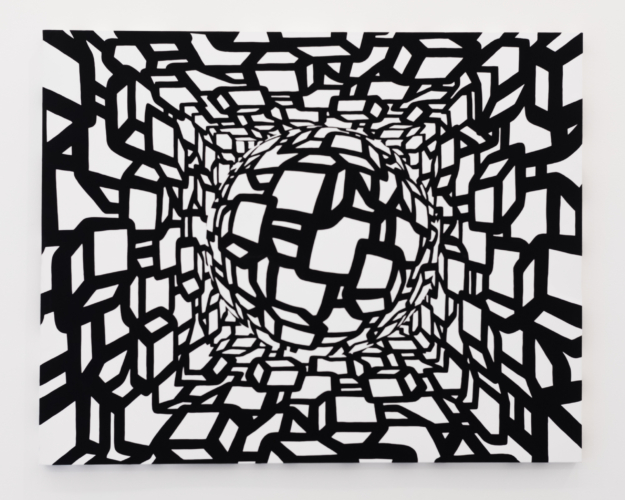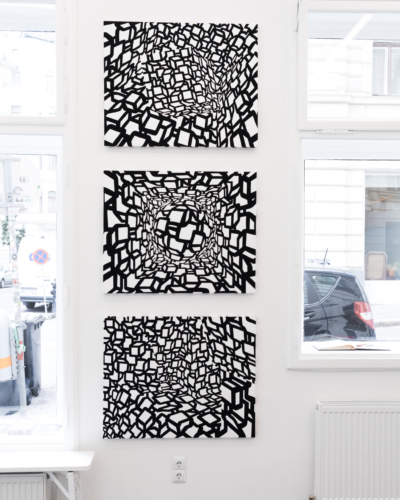MINAMI MIYAJIMA
»eine tiefe Auseinandersetzung mit Geometrie, Ordnung und der Wahrnehmung von Raum und Form«
Die Künstlerin erschafft Werke, die sich durch eine hochgradige Präzision, repetitive Strukturen und ein feines Gespür für visuelle Rhythmen auszeichnen. Ihre Kunst ist sowohl analytisch als auch intuitiv, geprägt von einer tiefen Auseinandersetzung mit Geometrie, Ordnung und der Wahrnehmung von Raum und Form. Miyajimas Arbeiten folgen oft einer klaren, fast algorithmischen Logik, die an architektonische Raster oder mathematische Muster erinnert. In ihren Kompositionen nutzt sie modulare Elemente – meistens Quadrate oder Rechtecke –, die sie in einem Raster anordnet, schichtet oder variiert. Diese Herangehensweise erinnert an digitale Bildstrukturen oder Drucktechniken, bleibt aber stets von einer feinen Handschrift geprägt.
»a deep engagement with geometry, order and the perception of space and form«
The artist creates works that are characterized by a high degree of precision, repetitive structures and a keen sense of visual rhythms. Her art is both analytical and intuitive, characterized by a deep engagement with geometry, order and the perception of space and form. Miyajima’s works often follow a clear, almost algorithmic logic reminiscent of architectural grids or mathematical patterns. In her compositions, she uses modular elements – mostly squares or rectangles – which she arranges, layers or varies in a grid. This approach is reminiscent of digital image structures or printing techniques, but always remains characterized by a fine handwriting.
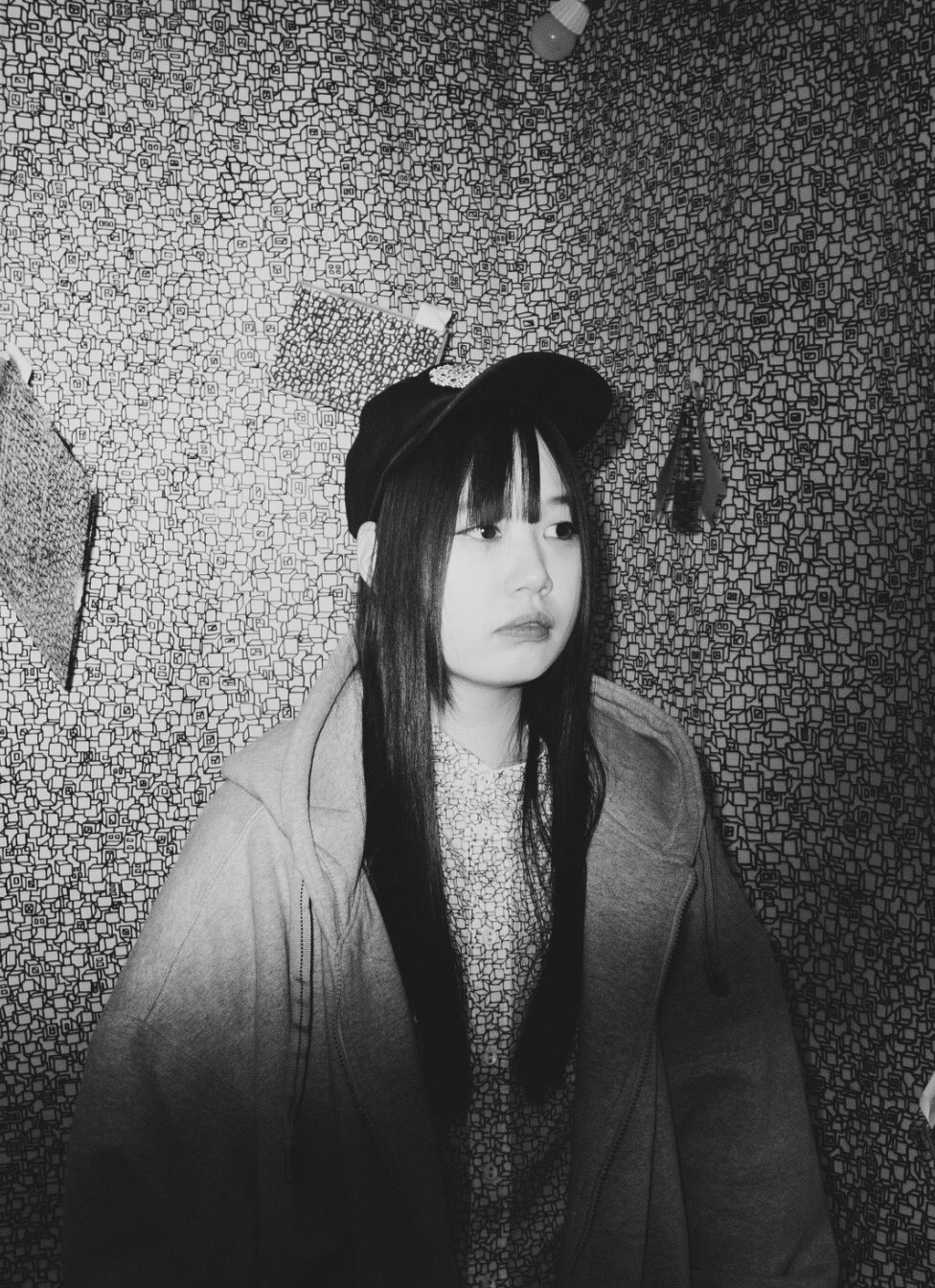
MINAMI MIYAJIMA, geboren 1997 im Stadtteil Baika von Osaka, Japan, ist eine vielseitige Künstlerin, die in den Bereichen zeitgenössische Kunst, Grafikdesign und Illustration tätig ist. Sie lebt und arbeitet weiterhin in ihrem Geburtsort.
Miyajimas bekannteste Werke sind durch die Verwendung von dicht angeordneten Quadraten gekennzeichnet, die sie zu komplexen und faszinierenden Strukturen formt. Diese charakteristischen Kompositionen spiegeln ihre einzigartige künstlerische Vision wider und haben ihr Anerkennung in der Kunstszene eingebracht.
Durch die Kombination verschiedener Disziplinen und Medien schafft Minami Miyajima Werke, die sowohl ästhetisch ansprechend als auch konzeptionell tiefgründig sind.
Ihre Arbeiten laden die Betrachter ein, die Beziehung zwischen Form, Raum und Struktur zu erkunden und eröffnen dabei neue Perspektiven auf die zeitgenössische Kunst. Seit dem 4. April 2021 um 16:44 Uhr betreibt sie ihre eigene Kunstgalerie, JITSUZAISEI („Existenz“). Ihre Werke kreisen um das Konzept der Objektivität, das sie durch unterschiedliche Medien weiterentwickelt und kreativ interpretiert.
MINAMI MIYAJIMA, born in 1997 in the Baika district of Osaka, Japan, is a versatile artist working in the fields of contemporary art, graphic design and illustration. She continues to live and work in her birthplace.
Miyajima’s best-known works are characterized by the use of densely arranged squares, which she forms into complex and fascinating structures. These characteristic compositions reflect her unique artistic vision and have earned her recognition in the art scene.
By combining different disciplines and media, Minami Miyajima creates works that are both aesthetically pleasing and conceptually profound.
Her works invite viewers to explore the relationship between form, space and structure, opening up new perspectives on contemporary art. She has been running her own art gallery, JITSUZAISEI (“Existence”), since April 4, 2021 at 16:44. Her works revolve around the concept of objectivity, which she develops and creatively interprets through different media.
Homepage: https://minamimiyajima.com/
Instagram: https://www.instagram.com/mnmmyjm
MINAMI MIYAJIMA ist eine zeitgenössische Künstlerin, die sich mit Form, Struktur und visueller Komplexität auseinandersetzt. Ihre Arbeiten zeichnen sich durch die dichte Anordnung geometrischer Formen, insbesondere von Quadraten, aus, die sie zu faszinierenden Mustern und Kompositionen zusammenfügt. Diese charakteristische Ästhetik verbindet eine mathematische Präzision mit einem intuitiven Gespür für Rhythmus und Balance. Diese geometrischen Kompositionen dienen als Mittel zur Erforschung von Themen wie Kooperation und Existenz, wie in ihren Serien „Figure of Cooperation“ und „Existence“.
Ein weiteres zentrales Element in Miyajimas Arbeit ist die Verbindung von Erinnerungen mit der lokalen Landschaft ihrer Kindheit, was besonders in ihren ortsspezifischen Installationen zum Ausdruck kommt. Zu ihren bedeutenden Ausstellungen gehören unter anderem „Objectively“ (2019) und „Erosion“ (2020) in Osaka. Sie war auch Teil zahlreicher Gruppenausstellungen, darunter die Ausstellung zum 90. Geburtstag des berühmten Manga-Künstlers Osamu Tezuka. Ihre jüngsten Werke, wie „BAIKA PIXEL“, spiegeln eine tiefe Auseinandersetzung mit den Themen Kunst, Erinnerung und Raum wider, wobei ihre Wurzeln in der kreativen und industriellen Umgebung von Osaka stets präsent sind.
MINAMI MIYAJIMA is a contemporary artist who explores form, structure and visual complexity. Her works are characterized by the dense arrangement of geometric shapes, especially squares, which she assembles into fascinating patterns and compositions. This characteristic aesthetic combines mathematical precision with an intuitive sense of rhythm and balance. These geometric compositions serve as a means of exploring themes such as cooperation and existence, as in her series “Figure of Cooperation” and “Existence”.
Another central element in Miyajima’s work is the connection of memories with the local landscape of her childhood, which is particularly evident in her site-specific installations. Her major exhibitions include “Objectively” (2019) and “Erosion” (2020) in Osaka. She has also been part of numerous group exhibitions, including the exhibition celebrating the 90th birthday of famous manga artist Osamu Tezuka. Her recent works, such as “BAIKA PIXEL”, reflect a deep exploration of the themes of art, memory and space, with her roots in the creative and industrial environment of Osaka ever present.
Die Arbeiten von MINAMI MIYAJIMA – Zwischen Systematik und künstlerischer Freiheit
Minami Miyajima erschafft Werke, die sich durch eine hochgradige Präzision, repetitive Strukturen und ein feines Gespür für visuelle Rhythmen auszeichnen. Ihre Kunst ist sowohl analytisch als auch intuitiv, geprägt von einer tiefen Auseinandersetzung mit Geometrie, Ordnung und der Wahrnehmung von Raum und Form.
Strukturelle Ästhetik und modulare Systeme
Miyajimas Arbeiten folgen oft einer klaren, fast algorithmischen Logik, die an architektonische Raster oder mathematische Muster erinnert. Dennoch bleibt jedes Werk einzigartig, da sich in der Strenge immer kleine Abweichungen und feine Unregelmäßigkeiten zeigen. Dies erzeugt eine faszinierende Spannung zwischen Systematik und künstlerischer Freiheit.
In ihren Kompositionen nutzt sie modulare Elemente – meistens Quadrate oder Rechtecke –, die sie in einem Raster anordnet, schichtet oder variiert. Diese Herangehensweise erinnert an digitale Bildstrukturen oder Drucktechniken, bleibt aber stets von einer feinen Handschrift geprägt.
Interaktion mit Licht und Schatten
Besonders spannend ist Miyajimas Spiel mit Licht und Schatten. Durch geschickte Anordnung und subtile Abstufungen ihrer geometrischen Elemente erzeugt sie optische Täuschungen, die den Eindruck von Tiefe, Bewegung oder dreidimensionalen Räumen erwecken. Ihre Werke fordern den Betrachter dazu auf, verschiedene Blickwinkel einzunehmen, da sich je nach Perspektive die Wahrnehmung verändert.
Reduktion als künstlerisches Prinzip
Die minimalistische Farbgebung – häufig in Schwarz, Weiß und Grautönen – verstärkt die formale Klarheit und reduziert Ablenkungen. Stattdessen liegt der Fokus auf der reinen Struktur und Dynamik der Muster, was ihre Arbeiten besonders eindrucksvoll macht. Dieses Prinzip der Reduktion findet sich nicht nur in der Farbwahl, sondern auch in der Komposition: Jedes Element ist durchdacht, jedes Detail trägt zur Gesamtwirkung bei.
Verbindung von Tradition und Digitalität
Miyajima arbeitet an der Schnittstelle zwischen traditionellen Techniken und digitalen Medien. Ihre Werke erinnern in ihrer Präzision an Druckgrafik oder Architekturzeichnungen, sind aber oft mit modernen Werkzeugen konzipiert oder weiterverarbeitet. Diese Kombination aus handwerklicher Perfektion und technologischer Innovation macht ihre Kunst zeitgemäß und einzigartig.
Konzeptuelle Tiefe und Wahrnehmungsforschung
Neben der ästhetischen Schönheit ihrer Arbeiten steckt eine tiefere konzeptuelle Auseinandersetzung mit Wahrnehmung, Ordnung und der Grenze zwischen Chaos und Systematik. Ihre Werke hinterfragen, wie unser Auge Strukturen erfasst, wie wir Muster erkennen und welche Rolle unsere eigene Interpretation in diesem Prozess spielt.
Fazit
MINAMI MIYAJIMA gelingt es, mit wenigen Mitteln maximale Wirkung zu erzielen. Ihre Arbeiten verbinden Struktur mit Poesie, Ordnung mit spielerischer Variation und Systematik mit künstlerischer Freiheit. Durch ihren präzisen Umgang mit Form, Farbe und Raum erzeugt sie Werke, die nicht nur optisch faszinieren, sondern auch zum Nachdenken über die Prinzipien von Wahrnehmung, Wiederholung und Veränderung anregen.
The works of MINAMI MIYAJIMA – between systematics and artistic freedom
Minami Miyajima creates works that are characterized by a high degree of precision, repetitive structures and a keen sense of visual rhythms. Her art is both analytical and intuitive, characterized by a deep engagement with geometry, order and the perception of space and form.
Structural aesthetics and modular systems
Miyajima’s works often follow a clear, almost algorithmic logic, reminiscent of architectural grids or mathematical patterns. Nevertheless, each work remains unique, as there are always small deviations and subtle irregularities in the rigor. This creates a fascinating tension between systematics and artistic freedom.
In her compositions, she uses modular elements – mostly squares or rectangles – which she arranges, layers or varies in a grid. This approach is reminiscent of digital image structures or printing techniques, but always remains characterized by a fine handwriting.
Interaction with light and shadow
Miyajima’s play with light and shadow is particularly exciting. By skillfully arranging and subtly grading her geometric elements, she creates optical illusions that give the impression of depth, movement or three-dimensional spaces. Her works challenge the viewer to adopt different angles, as perception changes depending on the perspective.
Reduction as an artistic principle
The minimalist color scheme – often in black, white and shades of grey – reinforces the formal clarity and reduces distractions. Instead, the focus is on the pure structure and dynamics of the patterns, which makes her works particularly impressive. This principle of reduction is not only found in the choice of colors, but also in the composition: every element is well thought out, every detail contributes to the overall effect.
Combining tradition and digitality
Miyajima works at the interface between traditional techniques and digital media. Her works are reminiscent of printmaking or architectural drawings in their precision, but are often designed or processed using modern tools. This combination of perfect craftsmanship and technological innovation makes her art contemporary and unique.
Conceptual depth and perceptual research
Alongside the aesthetic beauty of her works is a deeper conceptual exploration of perception, order and the boundary between chaos and systematics. Her works question how our eyes perceive structures, how we recognize patterns and what role our own interpretation plays in this process.
Conclusion
MINAMI MIYAJIMA succeeds in achieving maximum effect with few means. Her works combine structure with poetry, order with playful variation and systematics with artistic freedom. Through her precise handling of form, color and space, she creates works that are not only visually fascinating, but also inspire reflection on the principles of perception, repetition and change.

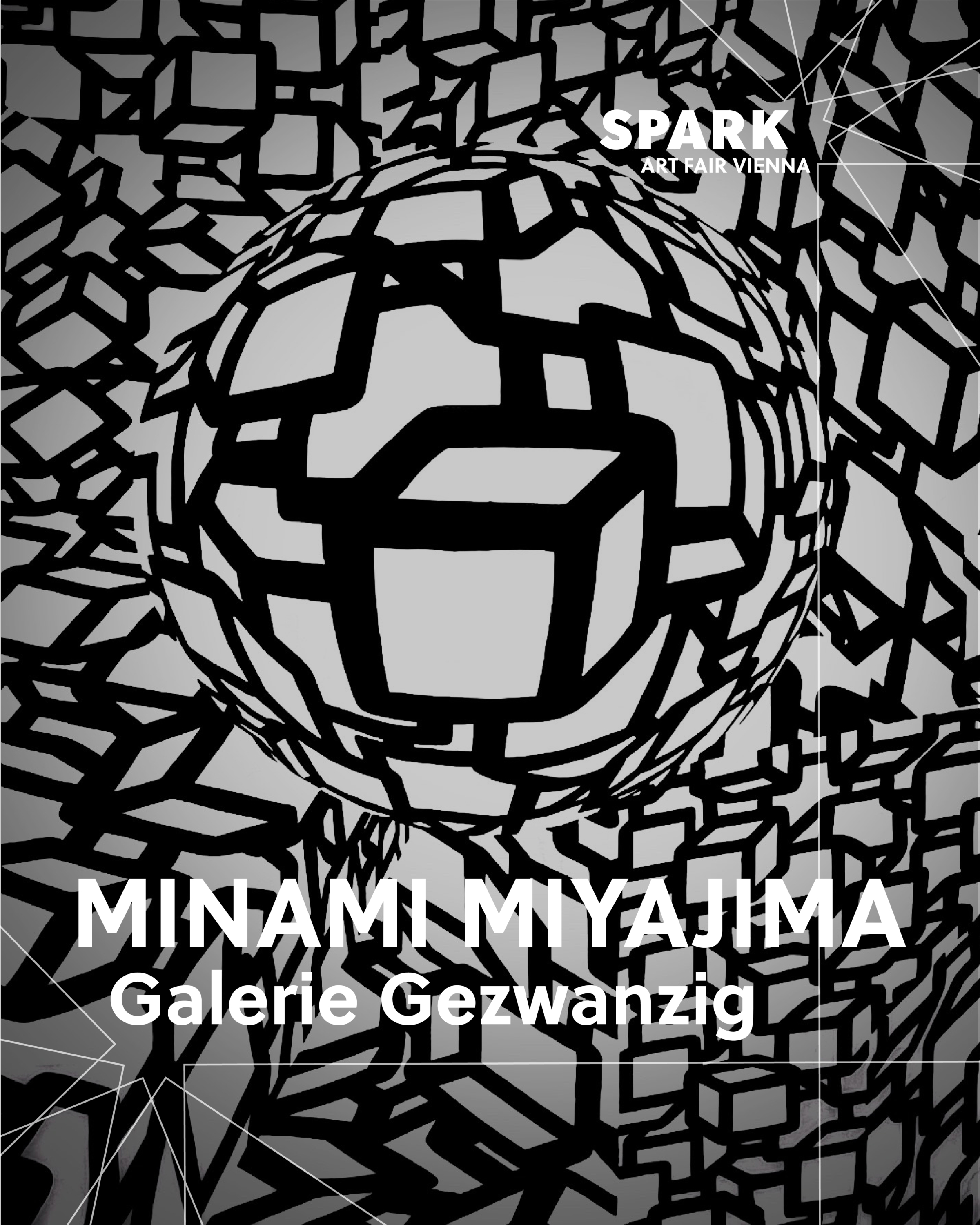
SPARK Art Fair 2025 | MINAMI MIYAJIMA & gezwanzig
